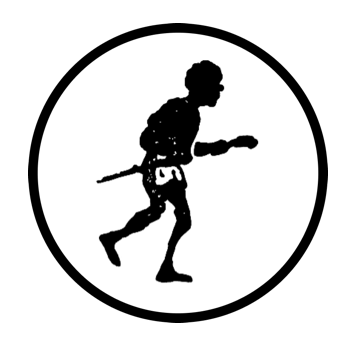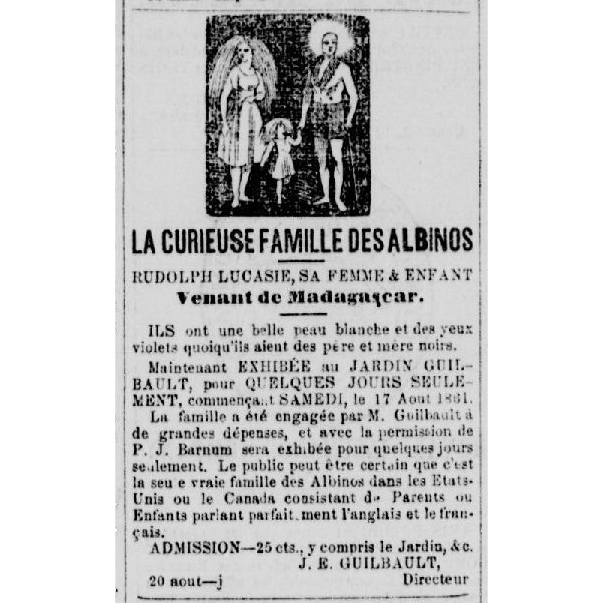
 0
0A vocabulary soaked in racism
Jacob "a wanted Mulatto"
Slavery left such a deep imprint on societies with a colonial past that their vocabulary was steeped in it. Shaped by scientific discoveries about animal species, racist vocabulary makes extensive use of animal imagery, in particular cattle, and the notion of crossbreeding between species.
Dehumanize and reduce to the status of animals
The purpose of the term negro, for example, is to dehumanize the people designated as such, to reduce them to the status of beasts, and to see them as heads of cattle or inventoried merchandise. The expressions mulatto, bastard, half-breed and simian racial slurs also attest to this strategy.
Montréal has had it's own human zoos. In 1861, J.E. Guilbault exhibited every day, from 9 to 7, a family of 3 albinos Malagasy at Guilbault Gardens, nearby Saint-Laurent's suburb.

Caption : La Minerve - 6 septembre 1862
With time and the genetic brew caused in large part by slave rape by owners, colorist divisions sprang up in the Atlantic World—quadroon (one fourth Black blood) and octoroon (one eighth Black blood).
The resulting children were classified according to their skin colour. The lighter the skin tone, the greater the privileges. This phenomenon is called colorism and seen in all societies with a colonial past.
The rights to equality and human dignity
With its essentialist content, racist language denies racialized people of their membership in the human community, even though this affiliation is proclaimed in the Universal Declaration of Human Rights.
The right to equality is inseparable from the right to respect for dignity. Adverse differential treatment of an individual or a group based on personal characteristics violates both these rights simultaneously.
For example, denying someone access to a business, restaurant or transportation because of his or her skin colour is a discriminatory practice that violates the right to equality. Such practices are prohibited in Canada under the Canadian and Québec Charters.
Such treatment undermines the dignity of the person and has harmful consequences. This is what entitles the person who suffers discrimination to demand reparation. The Québec Charter also prohibits harassment on discriminatory grounds, including skin colour.
